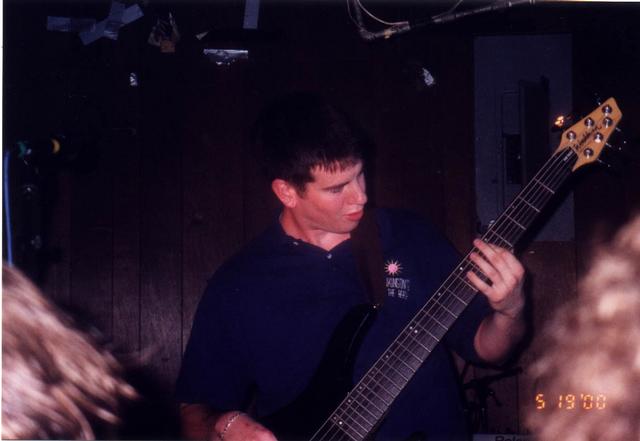The Very Moon intro is drawn out and features some narration from Barber. The first jam is about three minutes, short but well-played. The second jam sees Barber get on bass again. I have to say I enjoy hearing him play bass, and it’s one of the stronger Barber-on-bass jams I’ve heard, but it would be so much better if he were on the guitar. Magner gets into some ambient trancey space right away, latching onto a brooding melancholy theme, and I can’t help but imagine that this would have been a next-level jam if Barber were able to contribute to the melody and push it forward. The brooding trance theme breaks down around the 21 minute mark and Sammy lays down a more relaxed rock beat and Barber returns to guitar as the jam heads toward 7-11. The basic structure of 7-11 remains the same, although the lyrics seem to change each time. The jam begins as a frenetic full-band rager that breaks down after a few minutes. The band spends some time in this liminal space before Rob Derhak joins on bass, at which point Sammy establishes a four on the floor beat. The remainder of the jam is an excellent build into Run Like Hell. It doesn’t get up to the massive peaks reached by the great 1999 Run Like Hells, but it is an excellent jam regardless. Derhak does Brownie’s vocal parts in the verses, which was a little jarring. There is a short jam between the verses of a couple minutes that provides a nice peak going into the second verse. The main jam is only about seven minutes, but it’s excellent all the way through. Magner uses a variety of harsher synths in the beginning, and Barber brings the jam up to a properly energetic conclusion. After Run Like Hell, Derhak leaves the stage and Mauricio joins the band for the second ever rendition of Munchkin Invasion. The jam is a melancholy trance jam that finds its way to triumphant bliss as it reaches the “peak.” It’s a pretty standard version; the jam is maybe a little less weird than the debut, but the ending is considerably smoother. Story is a typically strong version, and follows a similar pattern as the Munchkin: melancholy, atmospheric jam that shifts gradually to a triumphant ending. After Munchkin, Jordan Crisman takes the stage for the first and only time that night. He performs a competent albeit truncated version of House Dog. The first jam is well-played, but shorter than usual, and the second isn’t played at all. Mauricio joins the band for the set closer Crickets. I wish Crisman had stayed, because I very much enjoyed that configuration in the previous night’s Helicopters, but oh well. The Crickets is a solid version, with two very atmospheric and “soundy” jams.
 |
| The Professor, Sam Altman, on the bass (discobiscuits.net) |
Highlights:
The Very Moon > 7-11
The mellow, atmospheric jam that develops out of the Moon funk is one of the better uses of the “Barber on bass” format so far—but it would likely be a lot better with the full band.
7-11 > Run Like Hell
Another strong early 7-11. Furious raging trance-fusion yields to the more relaxed build of a Run Like Hell intro, complemented excellently by Derhak’s bass.
Munchkin Invasion
I don’t necessarily think the jam is any better than the debut, but the composition is considerably better executed.
Story of the World
Like the 7-11, an excellent iteration of a new song. As with most in this era, Story stays in more somber territory than usual before building up to the glorious peak.
Stray Observations:
Some narration from Barber during the Very Moon intro, in which he states that he always imagined playing the melody as people walked up to the stage over a green rolling hill (but since they were already there, he wouldn’t make them go back).
After Munchkin, Barber says they can't do Helicopters because they did it the night before "as a five-piece, it was very interesting." I concur.
Prior to Story, Magner mentions that the band would play 6/27 at the Roxy in New York. Barber says it’s the biggest gig of their career. He says the Roxy has “one of those spring-boarded dance floors, sort of like the Crystal Ballroom.” He says that they might play Bazaar Escape at the Roxy (they did, in fact) in honor of the Bazaar Escape from the Crystal Ballroom, which he cites as his favorite. This is a reference to the Little Betty Boop > Bazaar Escape from 9/30/99. Barber also plugs Camp Bisco on August 25 and 26.
Barber says that Crickets is “perfect for this time of night.”
—Andy


